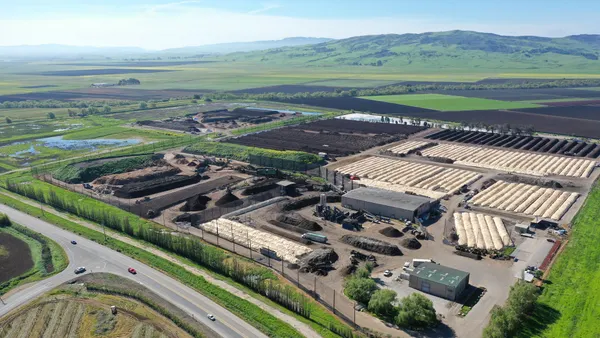Dive Brief:
- Four members of the New York City Council have written a letter asking Mayor Bill de Blasio to hold approval on a set of pending organics recycling contracts until alternative disposal sites can be identified. The group includes Antonio Reynoso, chair of the council's sanitation committee.
- The members represent three areas of the city — north Brooklyn, the South Bronx, and southeast Queens — which host 26 of the city's 38 private transfer stations. A heavy concentration of truck traffic was cited as one of the causes for higher asthma rates and other health issues in these neighborhoods.
- The city's Department of Sanitation (DSNY) is expanding its curbside food waste collection program to reach 1 million residents by the end of the year. The proposed organics contracts will also require approval from the city comptroller.
Dive Insight:
In 2014, Reynoso co-sponsored the bill Intro 495, which would limit the amount of waste facilities allowed in any one community. Reynoso hopes to pass Intro 495 by the end of the year. He previously questioned whether these same three communities should be handling organics at a Feb. 4 sanitation committee hearing and hasn't been happy with the city's response.
"The narrow-mindedness when it comes to determining where this trash goes is beyond me at this point," Reynoso told Waste Dive.
In theory, some of this organic waste is already being handled within bags of refuse at these transfer stations. Though it's possible that organic waste from new areas could be sent in or additional truck trips would occur due to the necessity of collecting material separately. Regardless of the possible outcomes, Reynoso wants an overall reduction of tonnage capacity and a freeze on any new material coming in to these three areas.
"Zero [additional] tonnage should be brought into these communities going forward," he said.
The challenge is that alternative options are currently limited. A large percentage of the city's waste is now exported via rail and barge, but until DSNY's full network of marine transfer stations is finished it must rely on private transfer stations.










